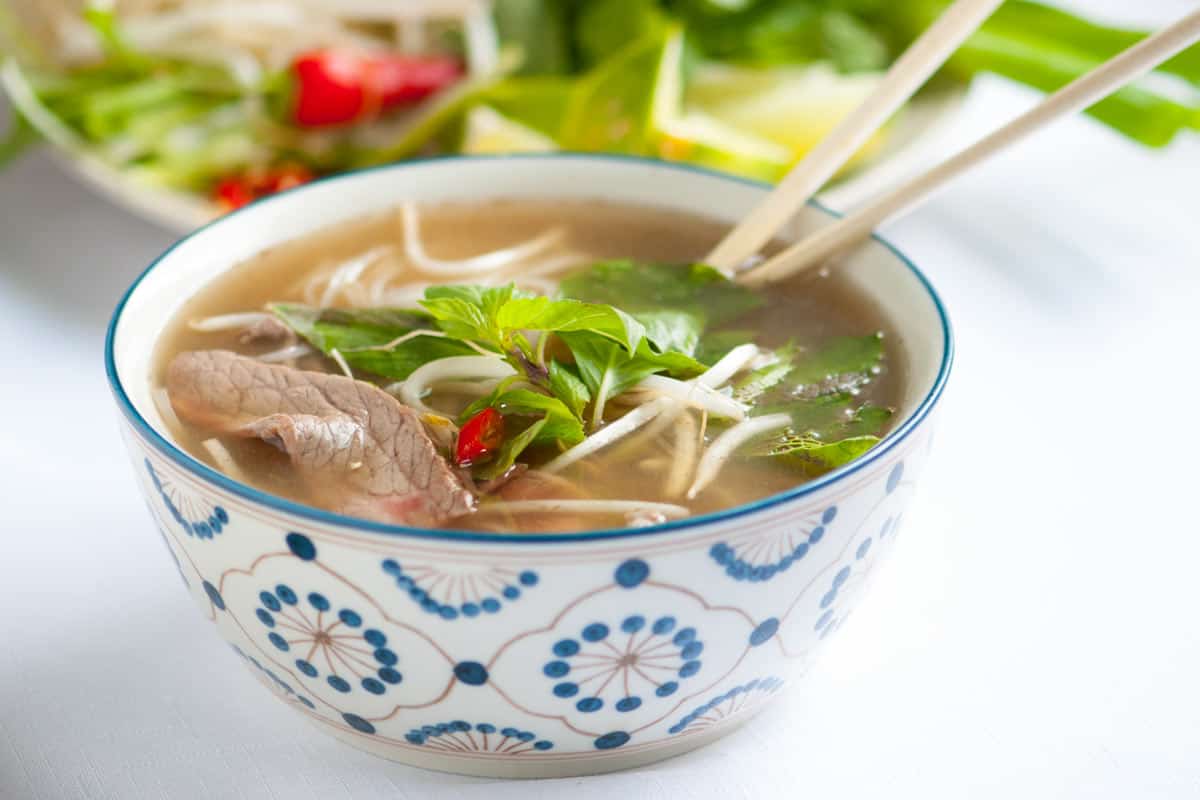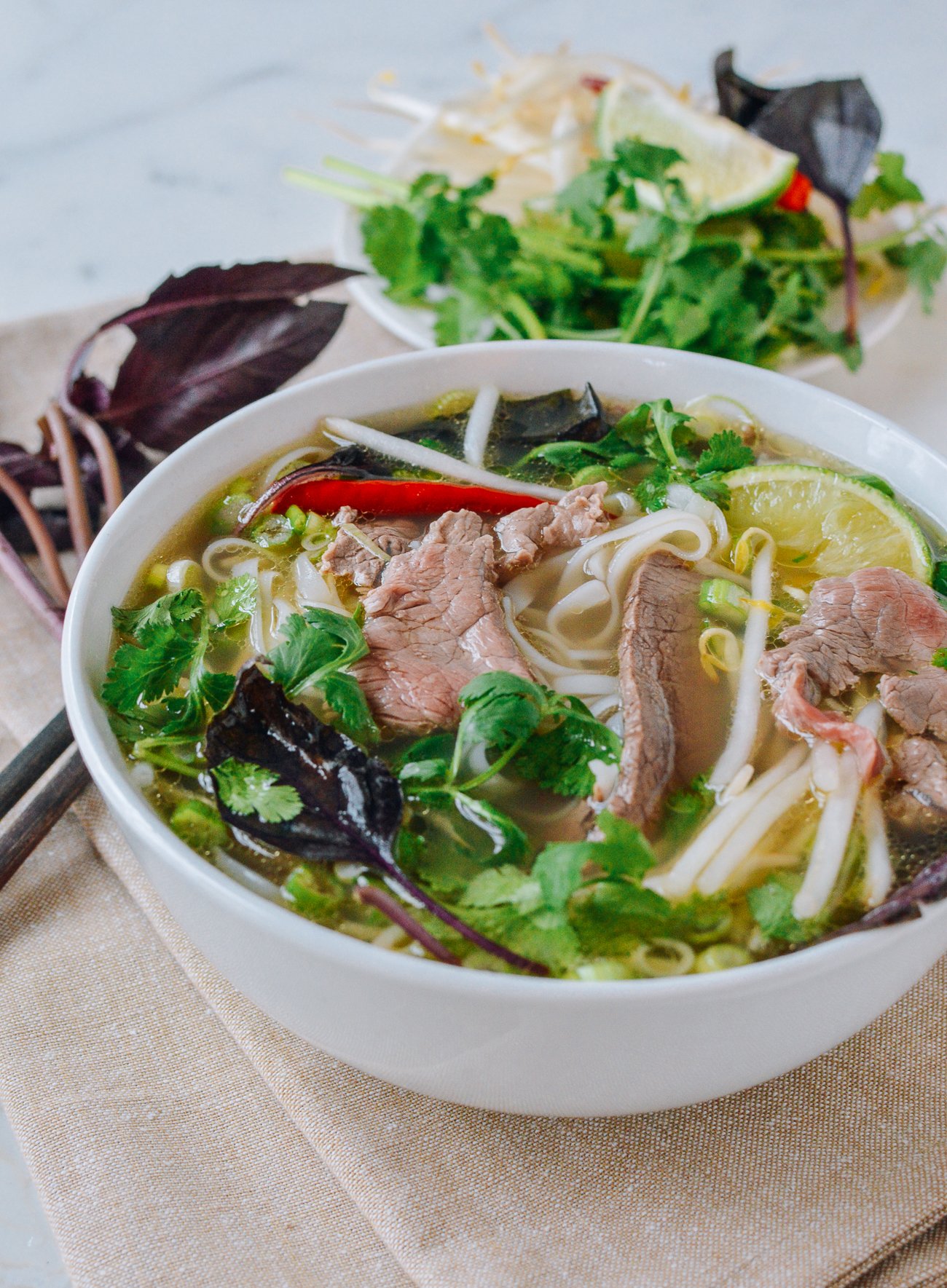The Ultimate Vietnamese Pho Recipe: A Delicious Journey
Vietnamese pho is a comforting, aromatic, and flavorful dish that has become a beloved global classic. Whether you’re enjoying it on the streets of Hanoi or preparing it at home, pho is an experience that captures the heart of Vietnamese cuisine. In this guide, we’ll walk you through the ingredients, techniques, and tips for making the perfect bowl of pho, from scratch.

What is Pho?
Pho (pronounced fuh) is a Vietnamese noodle soup consisting of broth, rice noodles, herbs, and meat, usually beef or chicken. It’s more than just a meal; it’s a cultural experience. Traditionally, pho is enjoyed as a breakfast, but it can be savored at any time of day.
Key Ingredients in Pho
The basic components of pho include:
-
Broth: The soul of pho. It’s rich, aromatic, and made by simmering beef bones (or chicken) with spices like star anise, cinnamon, and cloves for hours.
-
Rice Noodles: Thin, chewy, and slightly slippery, these noodles are essential to the pho experience.
-
Meat: Most commonly beef (pho bo) or chicken (pho ga). The beef is often served rare or cooked in the hot broth.
-
Herbs: Fresh herbs like cilantro, basil, and lime add brightness and depth of flavor to the dish.
Making pho at home might take a bit of time, but it’s well worth the effort. Let’s break down the process so you can prepare your own delicious pho.
Ingredients You Need
To make authentic pho, you’ll need a few essential ingredients. Here’s a quick shopping list to get you started:
Broth Ingredients:
-
2-3 pounds of beef bones (oxtail, shank, or marrow bones)
-
1 onion, halved
-
4-5 slices of ginger
-
1 tablespoon of fish sauce
-
1-2 star anise
-
1 cinnamon stick
-
4-5 cloves
-
1-2 teaspoons of sugar
-
Water (enough to cover the bones in your pot)
Pho Soup:
-
1 pound of beef sirloin or brisket, thinly sliced (or chicken for pho ga)
-
1 package of pho noodles (rice noodles)
-
Fresh basil, cilantro, and mint
-
2-3 lime wedges
-
Bean sprouts
-
Hoisin sauce and sriracha (optional for extra flavor)
Once you gather these ingredients, you’ll be ready to begin making your pho!
Step-by-Step Guide to Making Vietnamese Pho
1. Preparing the Broth
Start by roasting the beef bones and the onion. Place the beef bones in a large pot, cover with water, and bring it to a boil. This will help remove any impurities from the bones. After about 10 minutes, discard the water and rinse the bones under cold water.
Next, place the bones back in the pot and add fresh water to cover them. Add the onion, ginger, star anise, cinnamon stick, cloves, fish sauce, and sugar. Bring the broth to a boil again, then lower the heat and let it simmer for 3 to 4 hours. The longer it simmers, the more flavorful it becomes!
2. Straining the Broth
Once your broth is rich and flavorful, strain it to remove the solids. This step will leave you with a clean, clear broth ready to serve.
3. Preparing the Noodles
While the broth is simmering, cook the rice noodles. Follow the package instructions, usually by soaking the noodles in hot water for a few minutes. Drain and set them aside.
4. Assembling the Pho
To assemble your pho, divide the cooked noodles into bowls. Place the thinly sliced raw beef on top of the noodles. When the hot broth is poured over the meat, it will cook the beef instantly.
Garnish with fresh herbs, bean sprouts, lime wedges, and a dash of hoisin sauce or sriracha if you prefer extra flavor. Your pho is now ready to serve!

Tips for Making the Best Pho
Making pho at home can be a rewarding experience, but there are a few tips that will take your pho to the next level:
1. Use Fresh Ingredients
Always use fresh herbs and high-quality meat for the best flavor. The broth is the star of the dish, so sourcing fresh ingredients will ensure it tastes authentic and rich.
2. Let the Broth Simmer for Hours
The longer the broth simmers, the deeper and richer the flavors become. Don’t rush this process—let it cook for at least 3 hours to extract all the goodness from the bones and spices.
3. Adjust Seasoning to Taste
Pho is a flexible dish, and you can adjust the seasoning to your preference. If you like it spicier, add more sriracha or chili peppers. If you prefer a sweeter broth, add a little extra sugar.
4. Serve Immediately
Pho is best served hot and fresh. Once the broth is poured over the noodles and meat, serve it immediately to enjoy the full flavor of the dish.
Health Benefits of Pho
Pho is not only delicious, but it also offers several health benefits:
-
Protein-Rich: The beef or chicken in pho provides a good source of lean protein, essential for muscle building and overall health.
-
Bone Broth Benefits: The slow-cooked beef bones in the broth release collagen, which is great for joint health and skin elasticity.
-
Rich in Vitamins and Minerals: The fresh herbs, lime, and bean sprouts in pho are packed with vitamins A and C, helping to boost your immune system.
Variations of Pho
While pho bo (beef pho) is the most popular version, there are several delicious variations you can try:
1. Pho Ga (Chicken Pho)
This is a lighter variation made with chicken instead of beef. The chicken is typically poached and shredded before being added to the soup. It’s perfect if you’re looking for a milder, less fatty option.
2. Vegetarian Pho
For a vegetarian version, you can use vegetable broth and add tofu or mushrooms as a protein source. The key to great vegetarian pho is ensuring the broth is rich and flavorful, so don’t skimp on the spices!
3. Pho with Different Cuts of Meat
While pho traditionally uses beef sirloin or brisket, you can experiment with other cuts like flank steak, round steak, or even meatballs. Each cut offers a different texture and flavor, so feel free to get creative!

Frequently Asked Questions (FAQs)
1. Can I make pho without beef bones?
Yes, you can! If you prefer a lighter broth, you can use chicken bones for pho ga, or opt for a vegetarian version using vegetable broth and tofu.
2. How long can I store leftover pho?
Leftover pho broth can be stored in the fridge for up to 3 days. You can also freeze it for later use. However, it’s best to store the broth and noodles separately to prevent the noodles from becoming soggy.
3. Can I add other ingredients to pho?
Absolutely! Pho is very versatile. You can add extra vegetables like bok choy or mushrooms, or experiment with different spices and seasonings to customize the flavor.
4. Is pho gluten-free?
Traditional pho is gluten-free as it uses rice noodles. However, always check the ingredients in your hoisin sauce and other condiments, as some may contain gluten.
5. Can I use store-bought broth?
While homemade broth is ideal for authentic pho, you can use store-bought broth in a pinch. Just be sure to add extra spices and fish sauce to boost the flavor.
Conclusion
Pho is a delicious and comforting dish that’s perfect for any occasion. By following this step-by-step guide, you can recreate the authentic flavors of this iconic Vietnamese soup right in your kitchen. Whether you choose to make pho bo or experiment with variations like pho ga or vegetarian pho, the key is in the broth. Take your time, use fresh ingredients, and enjoy the process of making this flavorful dish!
For more recipes and cooking tips, be sure to visit DUYTHIN.DIGITAL, where we share automation tools and tips for making your life easier in the kitchen and beyond. Happy cooking!
